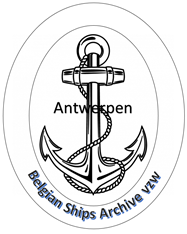
Spotted in the port of Harlingen the replica
VICTORIA or NAO VICTORIA (Spanish for "Victory") was a carrack famed as the first ship to successfully circumnavigate the world. Victoria was part of the Spanish expedition to the Moluccas (now Indonesia's Maluku Islands) commanded by the explorer Ferdinand Magellan .
The carrack (Spanish: nao) was built at a Basque shipyard in Ondarroa. Along with the four other ships, she was given to Magellan by King Charles I of Spain (later Emperor Charles V of the Holy Roman Empire). Victoria was an 85-tonel ship[a] with an initial crew of about 42. The expedition's flagship and Magellan's own command was the carrack Trinidad. The other ships were the carrack San Antonio, the carrack Concepción, and the caravel Santiago. The expedition began from Seville on 10 August 1519 with five ships and entered the ocean at Sanlúcar de Barrameda in Spain on September 20. However, only two of the ships reached their goal in the Moluccas. Thereafter, Victoria was the only ship to complete the return voyage, crossing uncharted waters of the Indian Ocean under Juan Sebastián de Elcano's command to sail around the world. She returned to Sanlúcar on 6 September 1522. Victoria was later repaired, bought by a merchant shipper and sailed for almost another fifty years before being lost with all hands on a trip from the Antilles to Seville in about 1570
Etymology
The Victoria was named after the Minim convent of Our Lady of Victory of Triana (Spanish: Convento de Nuestra Señora de la Victoria de Triana [es]) in Seville, where Magellan took his oath of allegiance to Charles I. The convent was subsequently deconsecrated during the French occupation of Spain during the Napoleonic Wars and later demolished.
Construction
A detail from a map of 1590 showing Victoria. The legend in Latin roughly translates into English as: "I was the first to sail around the world, and it was I who guided you, Magellan, to cross the Strait. I dared, and deservedly I am called VICTORY: my sails are wings; my prize is glory; my battle, the ocean."While agreeing on its Basque origin, for a long period the vessel was thought to have been constructed in Zarautz, next to Elcano's home town Getaria. However, research conducted by local historians has revealed that the nao Victoria was built at the shipyards of Ondarroa in Biscay. It was originally called Santa Maria, owned by Domingo Apallua, a ship pilot, and his son, Pedro Arismendi.
According to a notarial document dating from 1518, the ship had been used in previous years for trade between Castile and England. Royal Castilian officials bought the ship at a set price of 800 gold ducats, a figure at odds with the estimation on the ship's real value provided by the accountant of Magellan's expedition, and accepted by the owners only against their will.The ship was renamed Victoria by Magellan after the chapel he frequented on his prayers in Seville, the Santa María de la Victoria.
Crew
The voyage started with a crew of about 265 men aboard five ships, however only 18 men returned alive on Victoria, while many others had deserted. Many of the men died of malnutrition. At the beginning of the voyage, Luis de Mendoza was her captain. On 2 April 1520, after establishing a settlement in Puerto San Julian in Patagonia, a fierce mutiny involving three captains broke out but was ultimately quelled.[8] Antonio Pigafetta's and other reports state that Luis de Mendoza and Gaspar Quesada, captain of Concepcion, were executed and their remains hung on gallows on the shore.
Juan de Cartagena, captain of San Antonio, was marooned on the coast. According to Pigafetta, after Magellan's death on 27 April 1521, at the Battle of Mactan, remnants of the fleet tried to retrieve his body without success. Thereafter, Duarte Barbosa, a Portuguese man who had sided with Magellan in facing the mutiny, and João Serrão were elected leaders of the expedition. On 1 May 1521, they were invited by Rajah Humabon of Cebu to a banquet ashore to receive a gift for the king of Spain. At the banquet, most of the crew were killed or poisoned, including Duarte Barbosa and João Serrão, whom the natives wanted to exchange for Western weapons, but was left behind by the remaining crew. Pilot João Carvalho, who had survived the trap, then became the captain of Victoria. In August, near Borneo he was deposed and Juan Sebastián Elcano became captain for the remainder of the expedition.

